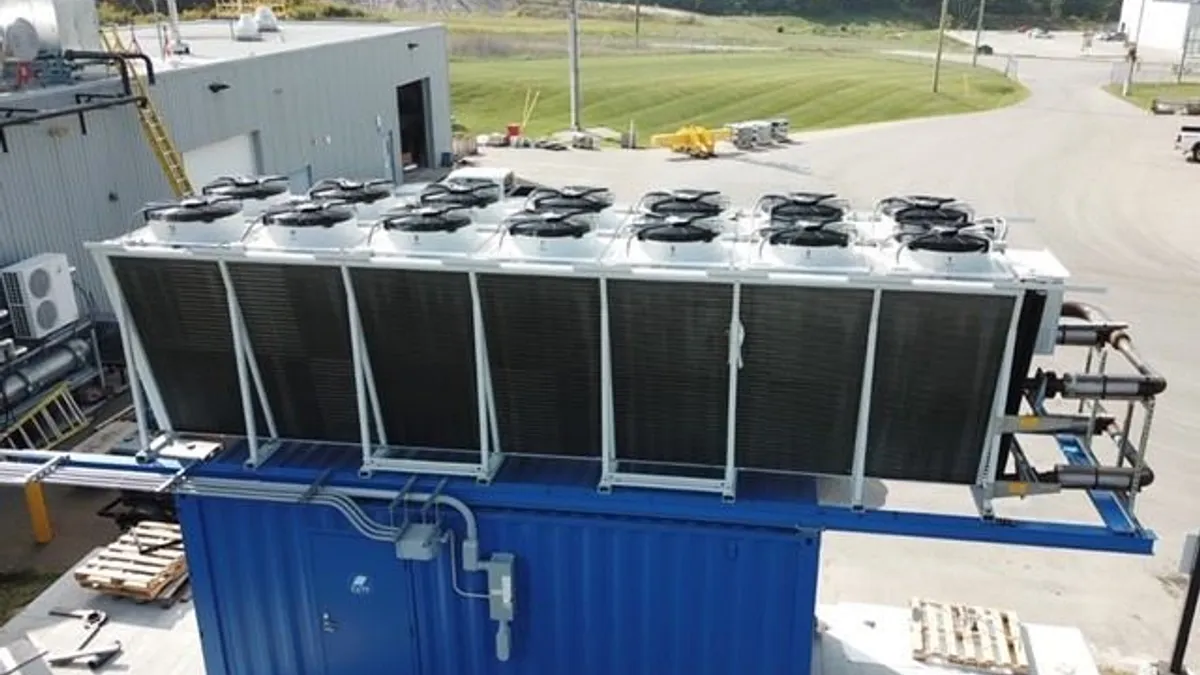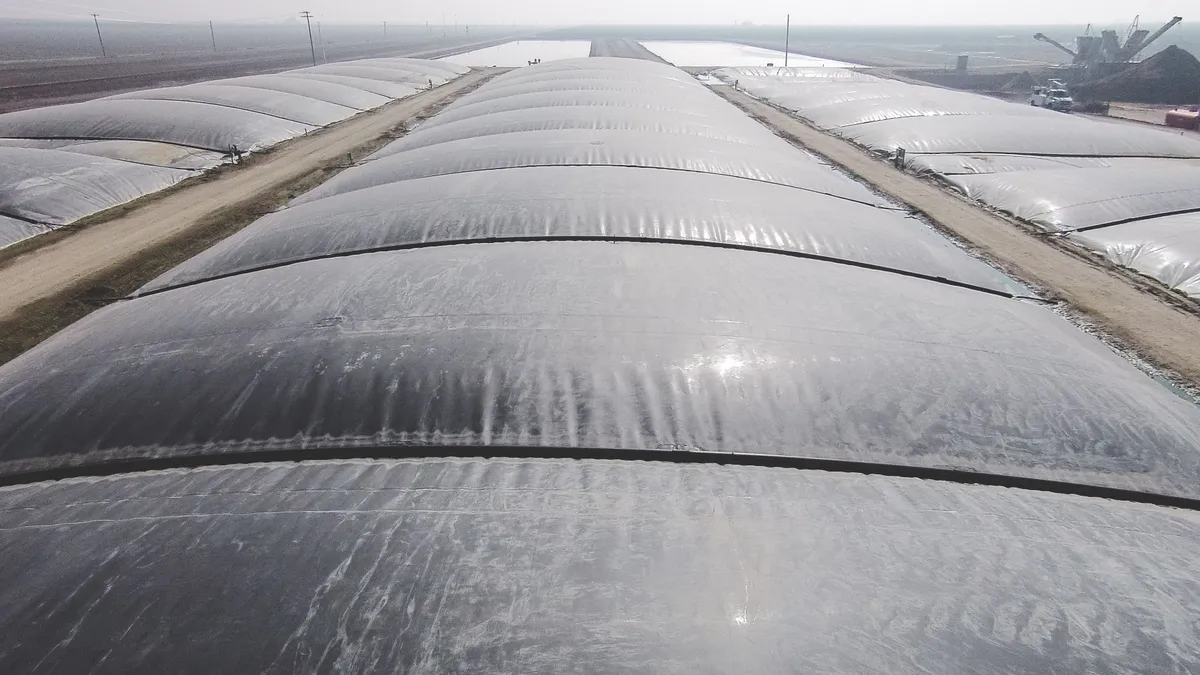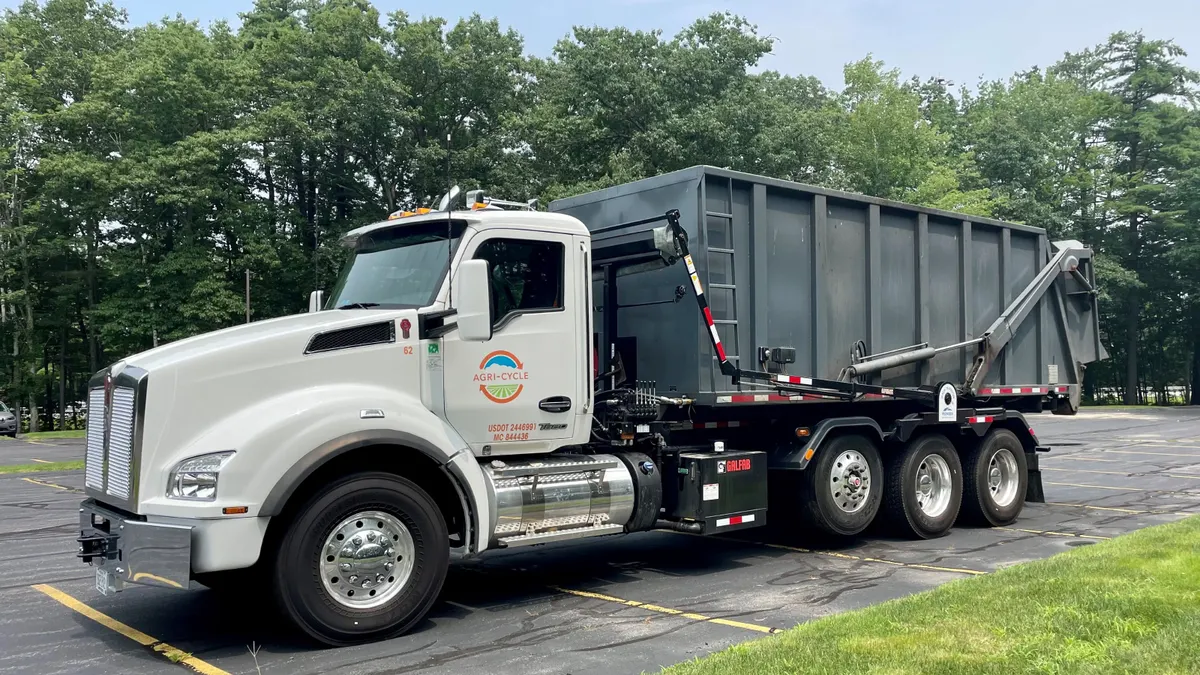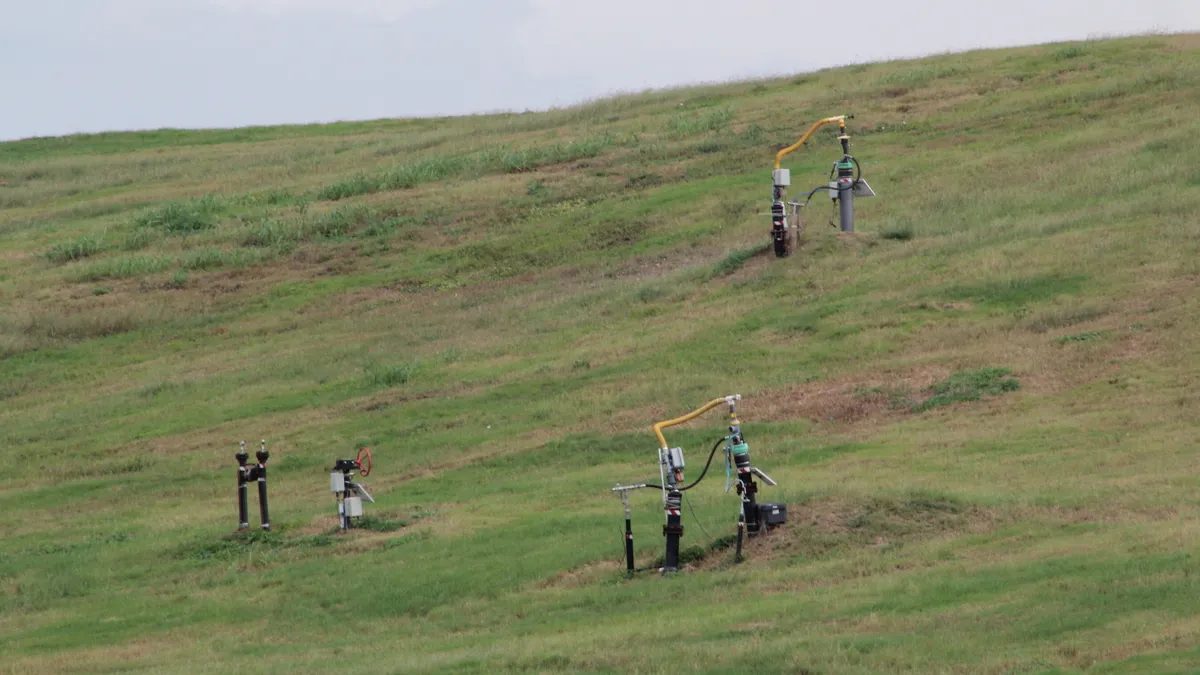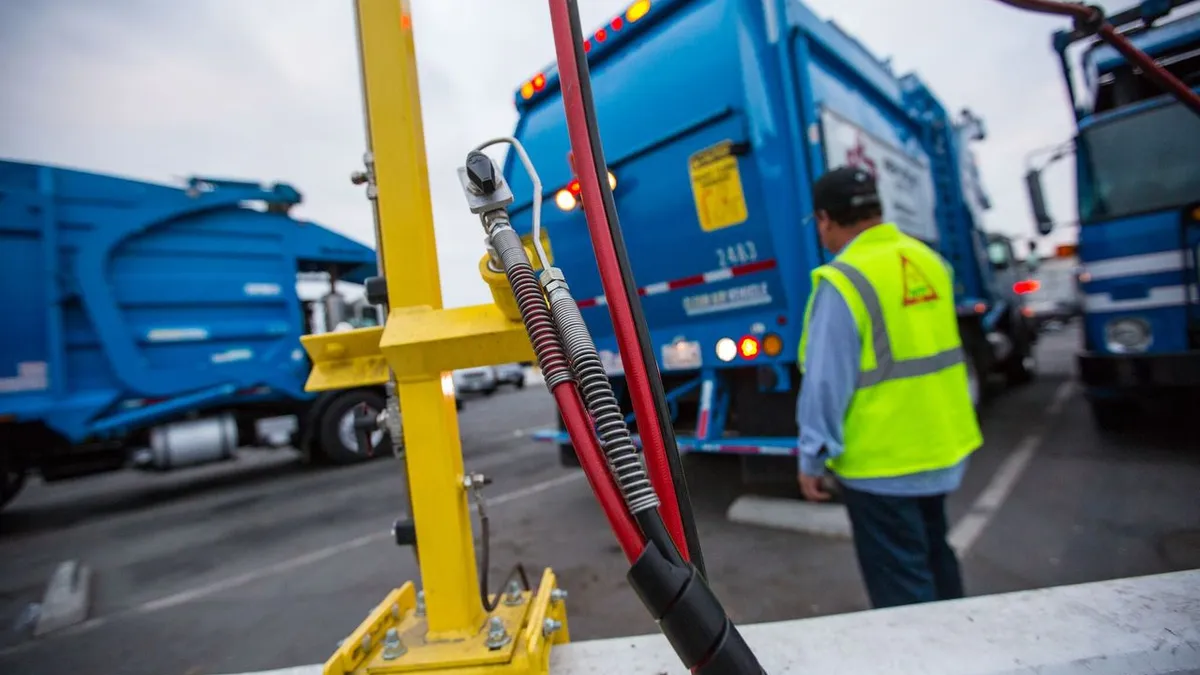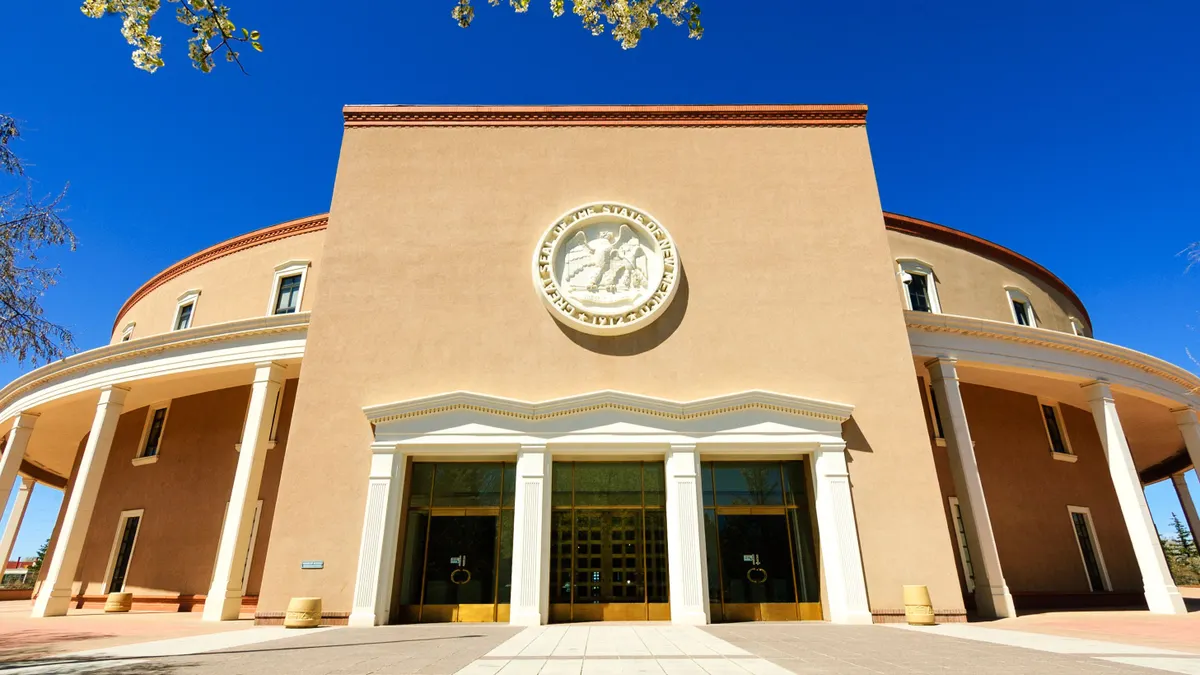Renewable energy incentive markets are changing, and Kam Mahdi, CEO of Clean Energy Technologies, or CETY, wants to be at the center of those changes.
His firm acquired the rights to a pyrolysis system from General Electric three years ago, and he’s hoping to bring the technology from Europe to the United States. Mahdi anticipates that his system, which can produce renewable natural gas, electricity and biochar, could take advantage of current incentives for carbon capture and eRINs, Renewable Identification Numbers for the electric vehicle market, that the U.S. EPA may soon enact.
CETY went public in March, and this week it reached an agreement with the Northeastern Vermont Development Association to purchase an eight-acre site for its first U.S. facility. CETY expects the project, backed by a $10 million investment, to become fully commissioned in 12 months.
Mahdi spoke with Waste Dive in May, before the purchase was finalized, to explain the path he sees for the technology.
This interview has been edited for length and clarity.
WASTE DIVE: What makes your pyrolysis system different and why did you decide to bring it to the United States?
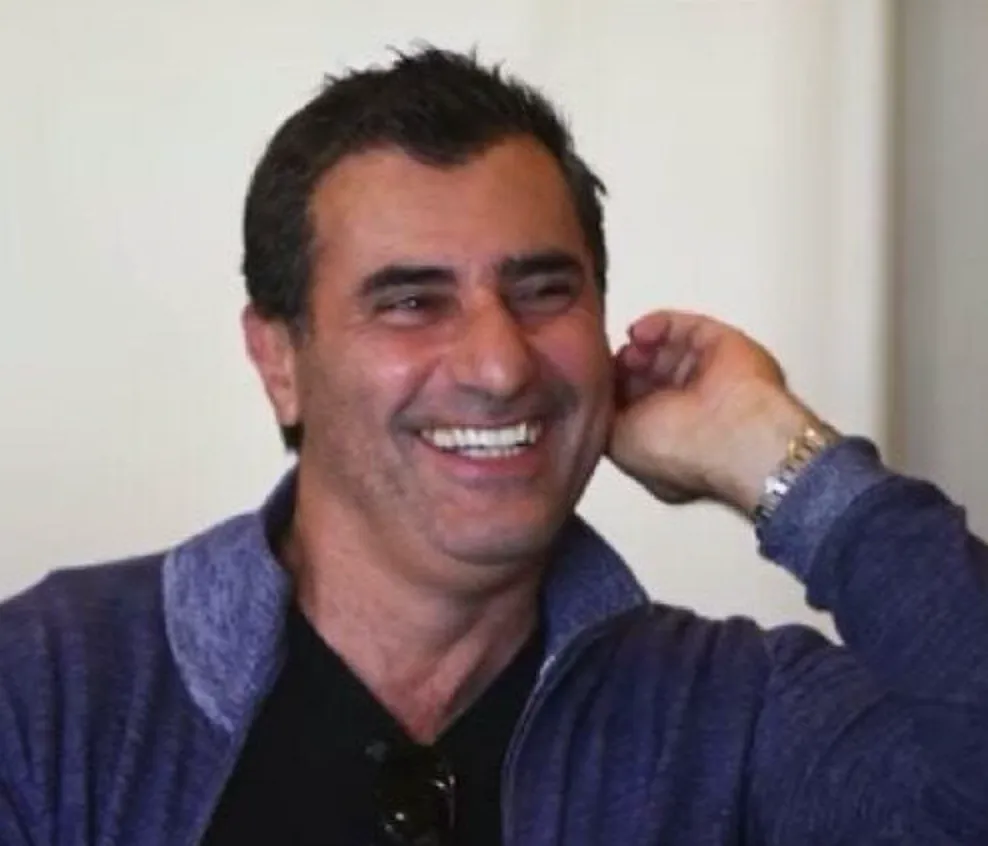
KAM MAHDI: I'm an engineer and serial entrepreneur at heart. So in 2016, we had this vision to support startup innovators in the clean energy technologies segment. We had this vision to bring this wide spectrum of clean energy companies under one umbrella as a public company and be able to offer recyclable energy solutions in energy fuels and alternative electricity to lots of small and mid-sized projects in North America, Europe and Asia that obviously make economic and environmental sense.
In 2016, we acquired this technology from General Electric which converts waste heat into electricity, and that's how we came across the industry that is biomass, a lot of industrial facilities, wastewater treatment plants, landfills and small power plants. Pyrolysis systems are coming up and not being utilized a lot in the North American marketplace, while obviously being used in Europe more frequently.
The technology of our pyrolysis system is called HTAP, which stands for high temperature ablative pyrolysis system. It processes industrial and municipal organic waste in a high temperature pyrolysis system and converts waste to energy. We just basically take the organic waste and it gets decomposed into synthetic gas and pyrolysis char.
And then different than everyone else is that we pass that synthetic gas through a secondary reactor, which then decomposes the condensable [gases] into hydrogen, carbon monoxide and methane. It makes the gas clean enough that it could be used as biogas, producing heat and also generating electricity through these power generation biogas engines. And the biochar is then cooled and stored.
A lot of these systems, the gasification process, we actually have clients that use our systems to generate on-site power for the system, but they use biogas gasification type of technologies for waste to energy. We have installations in Nashville, we have installations in New Jersey at a processing facility. They use this biogas gasification and the gas is not clean enough. So they use it to heat boilers, and from that waste heat they run our organic recycling systems. So our system, the gas is clean enough that it can essentially run a biogas engine.
The whole power generation world is very synergistic. The exhaust gases from this process are captured and we're using it to power our own waste heat recovery system. We meet all the emission standards that affects us, as we are in California. It's a very closed-loop system and exothermic.
How many facilities do you have currently in operation in the United States?
None. We came across this technology about three years ago — there's seven installations that are launched in Europe in various countries. We are rolling up a lot of entities that are all within our strategy in an efficient and sustainable environment.
Project financing is a major challenge. Unless you have a performing asset in the United States, it's really hard to secure financing for these other projects, especially if they're newer or up-and-coming. We decided to finance it internally and launch our own project, which now is in process in a location in Vermont near Lyndonville. That's going to be our first plant. We're going through the permitting process, and we're looking to have this plant be up and running by the first quarter of 2024.
What has it been like working with local authorities and getting this agreement approved? I know that this is a technology that we don't see as often in the United States, so I'm curious how the regulators and local officials have been in this process.
It's been very pleasant. I think it has a lot to do with where you go. Originally, when we were looking at each area, each territory has its own set of challenges. When we started down this path, we looked at Massachusetts as an option, because we were looking for locations where they were offering incentives.
That's a prerequisite because these solutions are very expensive and very hard to economically justify without having any sort of incentive or long-term power purchase agreements in place. Those are some of the obstacles that we come across. But Vermont is a very friendly state when it comes to sustainability. Massachusetts had incentives for waste to energy as well, except they just took it away.
In the industrial location that we looked at in Northern Vermont, it is a nonprofit corporation, so they were extremely friendly and they have been very supportive. The state has been very supportive and hopefully we get some publicity out of that as well.
Why do you think we don’t see many pyrolysis systems in the United States today? How do you see a path forward for this technology in the United States?
The problem is that when it comes to pyrolysis systems, it's a lot of laboratory experiments. So it gets a little concerning when you are planning this product that hasn't been proven, and you have to invest $15 million to $20 million into those projects, and you need to make sure that this thing works for 20 years. So that's a little bit of the reason why the technology hasn't caught on as fast in the U.S. or hasn't been installed or deployed in the U.S.
I think the other reason is that a lot of focus went into producing renewable natural gas strictly through anaerobic digesters, with incentives around RNG and injecting that gas into the pipeline, and offselling as transportation fuel [with pricing] based on the carbon intensity. I think that shifted the investment into those areas, and the value of RINs was very high.
I think now that paradigm is shifting with all these conversations around eRINs — and also other states realizing that this waste needs to be processed because it cannot be dumped anymore.
That's why we were willing to make that investment internally and launch this plant that we have tested, we have verified, we have taken to experts to make sure that it works. We feel very confident that this will be one of the systems that is going to become a household name in the United States, and there are different ways that we can recognize revenue and profitability from it.
Do you view mass burn incinerators as competitors?
I think we are different in a way where we're looking at being more flexible. We basically want to be decentralized. We want to go to where the waste is and offer solutions to people that are generating the waste. That's where we separate ourselves from the competition.
We can give people a wide range of solutions and also flexibility with the type of energy that they can get out of the system. We can give them electricity, we can give them heating, with minor modifications we can provide them with renewable natural gas. Now we're also working on making our system produce hydrogen, which is now also becoming very lucrative and in high demand. Our flexibility, our decentralization and our modularity and flexibility with the type of waste is what we're focusing on.
When you're talking to prospective clients, how do you explain how your process differentiates itself from composting or anaerobic digesters when it comes to processing organic waste?
Those traditional practices have been there. I think they will remain there. Obviously, with diverting to digestion, there was a lot of incentive for these landfills to produce heavy RNG so they could inject it into the pipeline and take advantage of the incentive. But now, I call it a pipe dream, in a way. Five years ago, I started talking about: How many [compressed natural gas] automotive vehicles do we have out there or fleets do you have out there that can take advantage of this gas? They've reached the saturation level, and they are at that point where states like California, particularly, have a lot of zero-emission cars coming out and are thinking of electrification. We're going to have all these EV charging stations that need to have more electricity.
Our system is designed to do that. Our system can process that organic material and generate high-quality biogas that can run a biogas engine and also can produce biochar materials that lend itself to the carbon capture part of the process. We're not just offsetting carbon, we're also capturing and sequestering, and then we're using it as soil amendment, which also has a high value.
The carbon credit for iochar and carbon sequestration has much higher value in the exchange markets. That by itself has a huge value instead of building a $30 million RNG plant. A lot of these landfills, over the last year, they're starting to rethink, do I need to set up an RNG plant? Or do I restart my biogas engines and then maybe do some electrification because there are eRINs coming up? We can provide a modular system, can be scalable, so we can compete with them.
There's one more aspect to this. This showcase, this modular project in Vermont, will trigger a lot of other initiatives and goals that we have, which will be to sell these units directly to even RNG producers, because they need to process that digestate material and get incremental revenue and incremental production from their renewable natural gas. So our system can take digestate, process it and give them additional RNG.
You’re based in California. Other facilities have found that sourcing feedstocks there has proven a lot more challenging than they initially anticipated. Have you thought about setting up a facility there? How are you thinking about addressing those challenges?
We'll be looking at opportunities in California. We have a close relationship with the legislators, Fiona Ma, the treasurer, has been here. She's been asking for this system for a while. Obviously the advantage of the biomass program in California is that it mandates the utilities to purchase electricity from green waste or foresting waste or ag waste, because the state has a huge problem in helping these farmers with the penalties and fees that they're paying for burning their waste because landfills are not accepting them.
So she literally was here and asked me, “When is this product going to come to California?” I said, “Well, as soon as we're finished in Vermont we're coming here next to help the state.” But those programs will fall potentially under our own design, build, owned and operated model, which then itself would also bring new revenue into our business model.
[Feedstock] has been the biggest challenge, yes. That's why we're in Vermont, because that place has a very healthy, well-balanced feedstock market. They have a lot of distributors and the price is steady, [so] you can have long-term agreements. This is exactly the conversation I had with our state treasurer. I said, “You have all this forestry waste, for instance, up in the mountains, but it costs eight, nine cents to haul it down the mountain to bring it to your plant. So even if the facility is paying 18, 19 cents, it doesn't make sense.” That's a problem.
Then you get into the ag waste side of the environment, it's seasonal. So you're gonna have to go to co-ops. Co-ops will be a great source of feedstock, because they collect all this waste and you could establish a relationship with them. They'll have a stable, steady feedstock because they don't have to haul them up and down the state. However, they don't have the capital to finance these projects on their own. So that's where you have to have some solid project financing behind you.
How does that affect the timeline for you to launch your next project?
So our thought is we could potentially do another project in Vermont. We should be done with our permitting, and our [power purchase agreement] should be in place, in about eight weeks. Then on the other permits, we're anticipating within 90 days. We're going to launch construction in the third quarter of this year. So I think by the end of third quarter is when we're going to start planning that next site.
There are a couple of sites that we're eyeing in Vermont right now. But I think towards the end of this year, we're gonna start talking to the state and the landfill gas industry and all of these landfill relationships that we have, to see what will be the next step for us and which kind of waste, what kind of customer will we be taking it to, or what kind of financing will we wrap this project with.
We want to launch a project in our backyard. [California] is behind us. We're very visible in this state, we want to help the state, we want to help our politicians as well. And definitely next year, we would have some ideas as far as where, how and by what asset we'll be launching.



